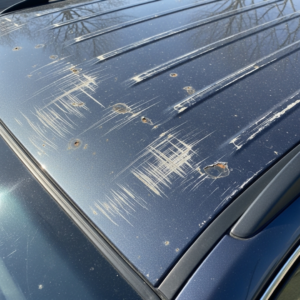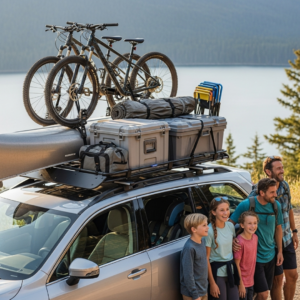If you’ve ever wondered how roof rack affect your car, you’re not alone. Roof racks are incredibly useful for carrying extra luggage, sports gear, bikes, or camping equipment. They free up interior space, making road trips more comfortable and convenient. However, while they add practicality, roof racks also have a direct impact on your car’s performance, fuel efficiency, and safety. Understanding these effects will help you use them wisely and avoid unnecessary wear or costs.
1. Impact on Car Performance
When you install a roof rack, you change the aerodynamics of your vehicle. Even when empty, a roof rack increases wind resistance by disrupting airflow over the roof. This additional drag can lead to:
- Reduced acceleration – Your engine works harder to maintain speed, especially at highway speeds.
- Lower top speed – Increased drag slightly limits how fast your car can go.
- Handling changes – The extra weight on top can raise your car’s center of gravity, affecting cornering stability and increasing body roll.
For heavy loads, performance drops become more noticeable. If you frequently drive in mountainous areas or carry bulky items like kayaks, the impact can be even more significant.
Tip: Remove the roof rack when not in use to restore your car’s original aerodynamics and handling balance.
2. Effect on Fuel Efficiency
One of the most noticeable effects of a roof rack is increased fuel consumption. According to various studies, an empty roof rack can reduce fuel efficiency by 5% or more, while a loaded rack can increase that figure to 10–25%, depending on speed and load size.
The reasons are straightforward:
- Air resistance – Bulky items on your roof create drag, forcing the engine to burn more fuel.
- Extra weight – Every kilogram you add makes the engine work harder.
For long-distance driving, the extra fuel costs can add up quickly.
Fuel-Saving Tips:
- Only install the rack when you need it.
- Pack items to be as aerodynamic as possible.
- Use cargo boxes or bags designed for minimal drag.
3. Safety Considerations
While roof racks are safe when used properly, improper loading can lead to accidents or damage. Safety issues include:
- Shifting loads – Poorly secured items can move during turns or braking, affecting vehicle stability.
- Overloading – Exceeding the manufacturer’s recommended roof load capacity can strain the roof structure and suspension.
- Wind sensitivity – Tall or wide loads increase susceptibility to crosswinds, which can make steering harder.
To ensure safety:
- Always check your car’s maximum roof load rating (usually in the owner’s manual).
- Distribute weight evenly and keep heavy items inside the car when possible.
- Secure all items with quality straps or tie-downs.
4. Wear and Tear on Your Car
Roof racks can contribute to gradual wear if left installed year-round:
- Paint damage – Constant friction or trapped dirt under mounting points can scratch paint.
- Rust risk – Damaged paint around mounts can allow moisture to cause corrosion.
- Suspension strain – Carrying heavy roof loads repeatedly puts extra stress on suspension components.
Regularly inspecting your roof rack and mounting points will help prevent long-term damage.
5. Balancing Convenience and Cost
Roof racks are a valuable accessory for active lifestyles, but they should be used strategically. By removing them when not in use, loading them properly, and staying within weight limits, you can enjoy their benefits without compromising your vehicle’s performance, fuel efficiency, or safety.
Now that you know how roof rack affect your car, you can make smarter decisions about when and how to use them. Increased wind resistance, reduced fuel efficiency, and safety considerations are all important factors to keep in mind. The good news is that with proper use and care, these downsides can be minimized. For top-quality roof racks, accessories, and expert advice, visit Scorpion Truck Stuff your trusted partner in keeping your vehicle road-trip ready.






